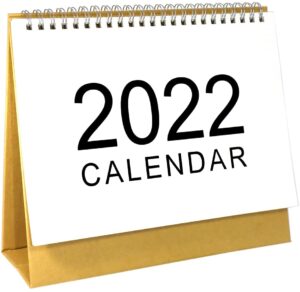Non-profit boards usually meet monthly or quarterly and most of those meetings involve multi-item agendas. Tradition tends to rule what the design of the agenda looks like. I think this is unfortunate. This post looks at some easy to adopt ideas that, for most, will represent a departure from their current agenda practices.
If board chairs and executive directors, the two people most responsible for the agenda, are prepared to experiment with some new board meeting elements they can give more spring to their organization’s governance step.
The standard board meeting is a “business meeting”, that is, one that focuses discussion under some common headings. These can include correspondence, committee reports, the financial report, and the executive director’s report. Indeed, many boards still use the categories “old business” and “new business.”
The use of a “formulaic” agenda is commonplace. The pervasiveness of “Roberts Rules” is partly responsible. But assumptions about what should be on the agenda also holds much sway and prevents attention to the planning of individual meetings and to the pattern of essential governance work over the course of a year.
Efficiency and better time-management has long been the focus in the search for better meeting recipes. Here it is content and deliberation. A one and a half to two hour board meeting ought to be expected.
What follows is a look the construction of the board meeting agenda and suggestions for some real alternatives. I will also look at the value of a board calendar, how reports are dealt with and the pre-meeting board package that goes out, Primarily though, I want to suggest how to better ensure that meetings focus less on the past and more on the future.
A typical board agenda
Below is my version of a typical board meeting business agenda. If your non-profit has abandoned some elements of this model already, bravo.
Eight to nine items are commonplace. Beyond the first and last two items the agenda can be even longer. In a 90-minute meeting few matters get more than 10 minutes on average. Even if an item gets 20 minutes this is often not enough for any real deliberation by the group. And, the quality of discussion can be worse when directors have not come to the meeting having digested and thought about materials sent out to them in advance.
ABC Society
Board of Directors Meeting
- Approval of the agenda
- Approval of the minutes of the previous meeting
- Correspondence
- Old business (or business arising from the minutes)
- Financial Report
- Executive Director’s Report
- Committee Reports
- Committee X
- Committee Y
- Committee Z
- New Business
- Adjournment
Some would say that standard categories similar to these are just fine, consistency and familiarity being most important to the board. Surely most boards would not put this at the top of their list of meeting priorities.
The alternative to the standard agenda is one built around the range of governance specific responsibilities that need attention over the long run. This means that to some degree the agenda must differ from meeting to meeting if all of the required board -level work is to get attention.
Changing things up starts with agendas that reflect the functions more than the structures of governance. But before revealing what a different design might look like there are a few other practices that can be considered first.
The board calendar
A board calendar is a 12 -18 month timetable for what key topics and responsibility areas should be on the board’s agenda and when. Whether a board meets quarterly or monthly (which for many practically means ten times a year) it really needs a work plan. Providing a sense of the pattern of governance work, a calendar is much more than a set of meeting dates. It is an essential board meeting planning tool.

Agenda items will differ from meeting to meeting if they reflect governance topics, areas of oversight and key decision items that are on the board’s work plan. One’s calendar will usually include board nominations, AGM planning, the AGM itself, executive director evaluation, board self-assessment, approval of the budget, the review of specific policies and external compliance. One can even include special events outside of board meetings on the calendar.
My overview of a board calendar tool can be found in Governance Guides on this site, This is an easy and effective way to enable a board to vary its agenda to ensure it gives, over at least a year of meetings, attention to both its strategic and oversight roles and even build in a little time to look at its own practices.1
A word here about decisions. The number of board-level decisions needed over the course of a year is a poor indicator of governance performance. Indeed, as organizations mature, decisions are more and more delegated to senior staff.2 Motions to approve or accept are often just nominally board decisions unlike their opposite, motions not to approve or not to accept.
There are of course important matters requiring deliberation, the weighing of options and the making of impactful decisions. But an organization that that has been around for a while and has put a number of management policies in place will not require many. Policies are in fact decisions, just more enduring ones at least from a management perspective. Indeed, some meetings may not require decisions any other than approval of the agenda and the minutes of the previous meeting. There is nothing wrong with this.
A consent agenda
In the search for ways to find time in meetings for more deliberative matters the idea of a “consent agenda” has been developed. Many readers will know this one already.
This is a board meeting practice that sorts routine, non-controversial business and reports into one agenda item that requires a single motion and vote. Normally the items included in the consent motion are: approval of the agenda, minutes of the previous meeting and matters that do not require board discussion, perhaps the approval of a policy that was previously reviewed and revised.
There is not much I can add to the idea of a consent agenda. The concept and examples can readily be found online. I have provided a few links in the notes below for those who want to investigate further.3
The adoption of a consent agenda approach is not a board meeting “game changer” but certainly reflects that someone on the board is paying attention. Be wary though; it too can become just another seldom-examined board meeting routine.
The executive director’s report
The executive director’s (or CEOs) report is another item that typically takes up a lot of board meeting time. Seldom is its purpose and content reviewed. What a pity. What if, rather than treat it as a routine meeting report item, the executive director and board chair could consider, in planning each meeting, whether the report in a particular month is for “information only” or contains matters requiring board advice, deliberation or even a decision, unrelated to items elsewhere on the agenda.
I have written about the construction of the Executive Director’s Reports here. There is also a great 2017 piece here by Robert B. Acton on the BoardSource blog. It is titled: Board Members Zoning Out? Stop Reading The CEO Report.
The executive director’s report does not need to be a separate agenda item. Indeed, the intent of the report might be twofold. The first could be to provide information relevant to other, more strategic, agenda items. The second could be to inform the board of matters requiring no verbal report or discussion. Examples of this might be a new hire, a long service anniversary, or a summary of notable points from a meeting with a key stakeholder. The reporting of program statistics also falls into this category.
If it is a board’s expectation, or even the executive director’s, to report on operational activities over the past month, fine.4 But this information need not always take board meeting time. It could, in some months, be part of the consent agenda.
The financial report
Nowhere is it said that a board needs to spend time every meeting reviewing a financial report. It may want to see one but the report need not be an agenda item.

Quarterly financial reports as an agenda item are adequate for many non-profits. Certainly discussion is not required if the organization is operating according to its budget and no, previously agreed to, “red flags” are present.5
I can however imagine some board members saying:
- We have a duty to regularly approve the financial report
- It has to be on the agenda but need not take any time
My response to these points is that;
- There is no need to “approve” a financial report if it only confirms that the organization is operating according to the board approved budget
- Routine approval of the financial report adds little value in meeting the board’s financial responsibility if there has been no consideration of what financial information the board really needs and how often
- If something is on the agenda it will always take time and attention away from more strategic matters (during the meeting and in preparing for the meeting) even if there is no presentation or questions
So, some of the time the financial report can be sent out as part of the board package “for information” but not included as an agenda item.
Boards could also choose to include it as a “consent item” some of the time. I would add that board “approval” of a financial report for the past period, where the organization is operating on budget, seems odd. “Accepting it” might be a better wording for a motion that acknowledges that the figures are consistent with their approved budget.
Budget approval is often the big board financial item of the year. Typically it is discussed and approved one meeting or two before the end of the organization’s fiscal year. This item along with a consideration of the board’s financial information needs ought to be a key item on the board’s calendar and therefore the central focus of a meeting once a year.
Consider, if you dare, moving to a financial report being provided every meeting but added as an agenda item only half the time.
Committee reports
Committee reports also need to be weighed in terms of how much meeting time they will require. Like the executive director’s report, unless a committee is requesting board advice or making a recommendation to be voted on, their report, if there is one, can be amongst the “information only items” provided in advance.
I recognize that having a “committee reports” agenda item is a way of nudging them about the work they are expected to do. The board calendar, in the hands of every director, should really serve this role. And, rather than utilizing the agenda as a committee reminder, it might be better for the board chair to check in with each board committee outside of meeting time.
I suggested earlier that I favour board meeting agendas that reflect functions rather than structures. So, rather than list “strategic planning committee report” as the agenda item consider framing it as “strategic planning”. Likewise, “board recruitment” might be preferred over “report of the board recruitment committee”. This approach may not appeal to others as much as it does to me,
The board meeting package
Most boards send out, or provide a link to, documents that support each of their meetings. Board members are expected to review these materials in advance. Typically included in the package is
- Board Meeting Agenda
- Minutes of Previous Board Meeting
- Financial Report
- Executive Director’s Report
and, it could include at various times of the year:
- A new or revised policy to be discussed and possibly approved, perhaps from the Governance Committee
- A summary of the ED’s Evaluation Report, perhaps from the Executive Committee, (marked “confidential” of course)
- A written backgrounder or briefing on a particular important decision item
- A news item, article or external report pertinent to the work of the organization
- Applications and resumes from a potential board member or two, from the Nominations Committee
- The management letter recently received from the external auditor, from the Audit, Finance and Risk Committee
I like the practice of listing board meeting support materials at the bottom of the agenda and, if some materials are meant “for information only” or as a “backgrounder” for a particular agenda item to indicate which ones.
Experiment with Your Board Meeting Agendas
Now to the key motivation for my post: encouraging boards and executive directors as “governance planners” to experiment with their meeting agendas.
Board Meeting Agenda: Key Responsibilities
So I will start with an example of an agenda where the main items, functional ones, come from the board calendar, the board’s work plan for the year.
ABC Society
Board of Directors Meeting
- Approval of the agenda
- Consent Items
- Board Recruitment: Board Composition and Skills/Experience Discussion. Question: Looking ahead, what should our Board be like? (40 minutes)
- Policy on In Camera Board Sessions – Draft from Governance Committee (20 minutes
- Director Evaluation -Template, Process and Timing – Proposal to formalize our approach – from the ED and Board Chair (30 minutes)
Adjournment
Meeting Documents
- Agenda
- Minutes of Previous Meeting
- Financial Report (Information only)
- Board Recruitment Skills Matrix (2 samples)
- In Camera Board Session Policy (Draft)
- ED Evaluation Proposal (2 pages)
- ED Evaluation Resources: Two Web Links
When employing consent items, I favour listing them. So, under item 2 above these (for example) would be indicated:
- Approval of the minutes of the previous meeting
- Financial update: Revenue and Expenditures Compared to Budget
Board Meeting Agenda: Strategy or Goal Focused
A regular business meeting agenda, as in the example just above, is necessary some of the time. But if your organization has a set of goals, perhaps arrived at through a strategic planning process, then it makes great sense for one or two of these to be the most prominent agenda items at some board meetings. Boards that meet quarterly, typically in longer sessions, might consider a “regular” business meeting for half the time they are together and a goal focused agenda in the other half.
Here is a sample of a more strategic agenda:[1]For a bit more on the concept of a strategic agenda here is a one-page resource from Board Source
ABC Society
Board of Directors Meeting
Networking and social time
- Review and approval of the agenda
- Approval of minutes of previous meeting
- Goal: Become best not-for-profit employer in our sector
- Goal: Track client success 5 years post service
- Quarterly Financial Report
- Review of Board-ED communication policy
- Next meeting: key Items
Meeting Documents
- Agenda
- Minutes of Previous Meeting
- HR Dashboard: ED Update on our 5 progress indicators
- Client Tracking: ED Report on discussion with one funder and two service providers, plus data sharing and privacy issues
- Financial Reports: Revenues and expenses compared to budget, YTD
- Emerging Funding Challenges -ED report
In this example, all the agenda items could be from the board calendar. My example here does not include a consent item (a number of routine approvals) but could be if one retitled item 2 as “Consent items” and listed them.
My financial report example here includes a revenue and expense statement and a funding prospect report from the ED that might focus, for example, on government contracting trends rather than charitable donations. In a different quarter the extra financial report might be on changes to assets and liabilities (balance sheet). The content of the quarterly financial report ought to flow from the annual planning of the board calendar, not from an arbitrary choice.
The importance of governing with goals
Any move to looking at organizational goals at board meetings is to be celebrated.
Having a strategic plan of course makes it easy to pick a goal or two for focusing three or four board meetings a year. Having a plan also provides some substance for discussion: a progress report from the executive director or some further consideration of key indicators.
A non-profit does not have to have a formal strategic plan for it to have more forward- looking discussions around the board table. Creating a few organizational goals is an ideal topic for a special board meeting, one that sets aside the usual business agenda. Boards and staff can together create a set of goals for their organization, perhaps with a one or two year horizon. Try for 5 goals, 3 focused on mission impact, 1 on future resource development and 1 an operational aspiration.6
Goal focuses agenda items are not likely decision matters although some reconsideration or resetting of a particular goal might be.
It is likely that a goal-focused agenda item would be one where the executive director takes the lead. If it is on the board calendar then there is lots of time for the ED to construct a report on the pursuit of the goal and highlight one or two key items for discussion.
Here are a few things to keep in mind when focusing board meetings on organizational goals:
- Consider moving to a more strategic agenda for at least half your meetings over the course of a year,
- If your organization has a number of goals do not review all of them every meeting
- It is OK if, in any period, there has been no progress or even activity directed at a particular goal. The reason for this might require action, or it may not.
- Ensure that the executive director’s written report clearly addresses progress on the organizational goals that are on the agenda
- Schedule the specific goals to be reported on and discussed in your board calendar
The board chair and the executive director
I have written recently about the importance of the relationship between Board Chairs & Executive Directors. This partnership is key to board meeting agenda planning.
Perhaps you are not there yet. You may be an executive director who sets the agenda and does all of the board meeting preparation. If so, here is an real opportunity: rather than adding a discussion of “new board meeting format” to the agenda, just change the look of agenda. If you are adding a goal item support it with a short written report on the goal. Be prepared at the beginning of the meeting to say, “I guess you noticed some changes to the agenda. I want the board to give this approach a try”. At the end ask, “Well, what did you think of this format”? Should we use it again?”
You probably know the saying, often attributed to U.S. Rear Admiral Grace Hopper, that it is sometimes better to ask for forgiveness rather than permission.7 This is advice I frequently give to executive directors and board chairs seeking to improve their organization’s governance practices.
Some small adjustments
If you are not ready to try the more “radical” board agenda ideas here there are some simpler things to consider. See my notes on each.
- Get rid of “old business, new business” categories[2]Boards should indeed be focused both on old and new business. It would be would better though to divide the board meeting agenda into categories such as “looking backward and looking … Continue reading
- Ditch “business arising from the minutes”. I would recommend eliminating “business arising” as a category and just add the follow-up as regular agenda item.
- Ditch “correspondence”((The agenda item “correspondence” is a real hanger on. If someone has written to the Board or the Board Chair about a board concern then maybe it gets added to the agenda. Otherwise such matters are a staff responsibility)
- Assign approximate times to each agenda item
- Bold the text of the main or key agenda items
- Add a note to each an agenda item to designate whether it is a decision or discussion item
- Indicate on the agenda who will lead or report on each item
“Other business” as an agenda item
I am not sure what case can be made for an “other business” or “any other business” agenda item. It tends to be a catch all for something that does not fit elsewhere. It is another unexamined meeting routine. Often it is a place for board members to announce something that has little or nothing to do with the issues facing the organization. Maybe that is OK. And, sometimes it is a place for a director “bombshell”. Humm.
One suggestion I have heard is to limit “other business” to suggestions for future board consideration. Then it might be named: “future board meeting suggestions”. In the agenda example above I have suggested something similar as the final item. Ending off a meeting with a thanks and a look to the future work of the leadership team is an idea worth considering. Board chairs may want to make a note on their own copy of the agenda.
Community building
I am a fan paying at least a little attention to the social value of board meetings. A check-in before jumping into the agenda works for many,
I am not sure though that regular board meetings, whether they rely on a routine agenda or a strategic one, are the best place for board or board-staff “community building”. There is so little time and so much to do. Consider instead adding to the time the board commits to other kinds of engagement with the organization.
- Have a longer that usual board meeting (4 hours if the norm is 2) perhaps involving the sharing of food as well as a more personally-focused check-in
- Use your executive director update email or newsletter to share organizational news not closely related to board business
- Plan some board or board-staff gatherings outside of regular board meeting time.
Other kinds of board meetings
Not every board meeting needs to be a business meeting, that is, one with multiple agenda items. Single focus meetings have an important role to play in good governance. They too will take planning and maybe by others than the board chair and executive director. These will probably not happen if they are not built into your board calendar.
Consider inserting two meetings into your annual board calendar (if you generally have 10 meeting a year) focused on:
- Strategic planning or goal brainstorming meetings
- Meetings around a single topic facing your organization or sector
- Board education
- Topical meeting with a outside guest as presenter
- A joint board meeting with a sister organization
- A meeting of multiple stakeholders hosted by the board
Please try to avoid adding small items, what someone I know called “board administrivia”, to your focused special topic meetings.
So, what’s stopping you?
I have suggested how one might design a more strategically-focused board meeting agenda. Part of what is involved requires regular planning of the agenda and a move to reports that do not always become agenda items.
Does adopting the ideas above involve taking a risk? Consider answering these 4 questions about changing your board’s meeting agenda. You may have heard a version of these before:
- What will happen if we change up the board’s meeting agenda?
- What won’t happen if we change up the board’s meeting agenda?
- What will happen if we do not change up the board’s meeting agenda?
- What won’t happen if we do not change up the board’s meeting agenda?
Over to you, board chairs and executive directors – or anyone else on the board. Comments and suggestions on this post would be really appreciated. How have you improved your board meetings?
Note: the experiment icon used above is from FreePic (/www.freepik.com) from the site www.flaticon.com.
Endnotes
1. For a somewhat different visual image of a board calendar see Joan Garry’s excellent May 2016 post A Planning Guide for Board Meeting Agendas
2. Some decisions are required by governing bylaws to be board decision matters like borrowing or setting up a line of credit
3. For more on consent agendas see any of the following: Board Forward, Dos and Don’ts of Consent Agendas (2017); Board Source Consent Agendas (2019) and this piece (2014) from Vantage Point, a well-known non-profit consulting outfit in Vancouver. B.C. When minuting approval of the consent agenda set of items one should list each and indicate the single motion to accept and approve all.
4. It seems me that ED’s monthly report could paint a picture of what the ED did or what the organization did. The latter is a better choice if one’s goal is to give the board a glimpse of the work that goes on, The ED might also choose to report activities at a “managerial” level; or from the front lines.
5. I plan to tackle the board financial report and the topic of red flags in an upcoming post. An unavailable report is of course one flag but there are only a few others, some related to revenues, expenditures and budget, some to the balance sheet and a couple of others not necessarily revealed by the numbers
6. For more on goal setting see this piece from the website Volunteer Hub, and this piece on BHAG (Big, Hairy Ambitious) goals posted on Michael Brennan’s blog. Goals can be valuable even if they are not perfectly aligned with one’s overall mission or meet the sometimes-heard “SMART goal” test. meaning specific, measurable, attainable, relevant, and time -bound.
7. There are a number of sources of information on Admiral Grace Hopper, the presumed “ask forgiveness not permission person. For instance see Wikiquote.
References





Great post Grant!
Those responsible for the agenda and meeting process have a great opportunity to influence how well a board performs. If the board’s in a rut in terms of meetings, this post will help the chair and ED shake things up and help directors spend at least some time looking to the horizon instead of just the path they’re on.
I’d add that the person writing the minutes also has great influence here by ensuring that decisions, planned actions, and assigned responsibilities are well documented.
Roddy Macdonald
Consultant, Halifax, N.S.
http://www.linkedin.com/in/roddymacdonald/
Although I have worked in the not-for-profit sector for almost 30 years and in a leadership role for 20, I still get a little nervous when reading about progressive board governance practices, anticipating that we (or rather, I) might not measure up!
Our organization has moved away from the “typical board agenda” mentioned in the post, and items such as ‘Business Arising from the Minutes’ and “Correspondence” are a thing of the past. As an ED, I also strive to have reports and minutes submitted ahead of time to minimize the time-consuming, rote-reading of these documents. That said, I would say we still have a long way to go, and this post has some great suggestions for keeping the agenda focused on priorities. I plan on sharing the ‘board calendar’ and ‘single focus board meeting’ concepts with my board when we meet this week.
An anecdote related to experimenting with the agenda. A few years ago I attended a board governance workshop with three of our directors and we came back with a renewed focus on strategic priorities, and a revised board agenda along the lines of many of the good suggestions in this post. One of the new agenda items was named: Linkage to Ownership. The item was sufficiently opaque (to us anyway) that invariably there would be a discussion each meeting about exactly what the term meant; who were the owners we attempting to link to, and how exactly were we doing it? It seemed that everyone had a slightly different understanding of the term, and this led to interesting discussions about who we were and what really our mission was. After about a year of this, the item was renamed “Community Engagement”, something everyone immediately understood. However, looking back, perhaps this confusion was for the best; a point in each meeting when we struggled, together, to understand our purpose.
Thanks for sharing your suggestions, Grant, and for all your work over the years assisting our sector!
Peter Gillis
Executive Director
Valley Community Learning Association
Kentville, Nova Scotia
Good point about the Consent Agenda. I worked at a not-for-profit several years ago, and the Board Chair and I decided to implement the Consent Agenda. It really shortened the length of board meetings (they were creeping upwards of an hour and a half), as all of the documents needed for the Consent Agenda were circulated in advance (the Executive Director’s report included). The expectation became that the E.D. report was circulated well in advance of the board meeting, and that board members would read it.
At the Board meeting, unless someone called for a specific item to be extracted and tabled as an agenda item for discussion, the Consent Agenda was approved and the E.D.’s report was considered submitted, tabled, and approved. This created a lot of space and time to have high-level brainstorming and strategic discussion at the board meeting. A way more efficient use of everyone’s time and energy.
Henk van Leeuwen
Executive Director
Dartmouth Adult Services Centre – DASC Industries
A Not-for-Profit Business and Social Enterprise
Dartmouth, Nova Scotia